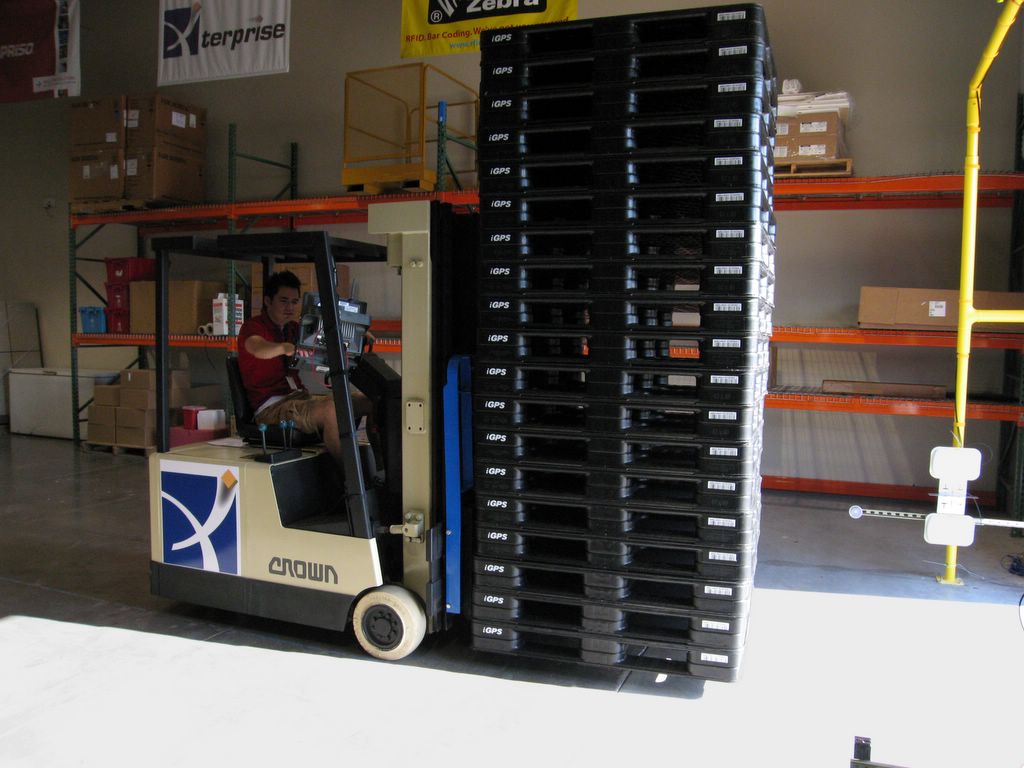ARTICLE UPDATED ON OCTOBER 3, 2023
During the industrial revolution, standardized dimensions for building materials such as screws or girders simply did not exist. In the early twentieth century, national governments began to create standard bodies to deal with the problem. The American National Standards Institute (ANSI) was established in 1918 so that projects in different states could use the same girders and bolts with minimal difficulty. Global standards were not established until 1947, with the inception of the International Organization for Standardization (ISO). ISO has set international standards for dimensions and measures ever since.
Today, businesses choose to comply with ISO standards for manufacturing, transportation, and warehouse storage purposes. Complying with ISO standards aids in regional and international expansion. However, there isn’t any single set of ISO standards for pallet dimensions, only specifications recognized by ISO.
The History of Pallets and Standard Pallet Dimensions

- Ancient Cargo: Pallets have a long history, evolving from simple wood skids used to carry cargo. Ancient cultures such as the Mesopotamians and Egyptians are thought to have used types of skids to move cargo used to build homes, canals, and even pyramids.
- Forklifts: The invention of the gas-powered forklift led to a series of modifications that created the modern pallet. Forklifts allowed people to transport loads that previously would have needed to be broken into individual components. The forklift necessitated something rugged enough to be handled by heavy machinery in a fast-paced environment.
- Reinforcement: The first change to rudimentary pallets was a third stringer in the middle of the skid to add strength. Later, cross pieces were added to give the forks a stronger surface to lift by. The final component was a bottom deck which strengthened the skid further, forming the modern stringer pallet. During World War II, the allies mandated a 48×48-inch universal pallet size to ease military logistics. This was downsized slightly to 40×48-inches, the standard size used in military operations today.
- Block Pallets and Common Dimensions: Eventually, block pallets were developed as sturdier alternatives to stringer pallets. By the time the International Organization for Standardization was created, well-established supply chains with their own standard pallet sizes had been operating for several years. ISO chose the most common pallet dimensions and established quality measures for materials and construction.
Pallet Specifications Recognized as ISO Standard Pallet Dimensions
A total of six pallet sizes are recognized by ISO, all of which are distinguished by their principal region of use.
| Dimensions in inches | Dimensions in millimeters | Unused Floor Space in 40′ ISO Container | Region |
|---|---|---|---|
| 40 x 48 | 1016 x 1219 | 3.7% | North America |
| 42 x 42 | 1067 x 1067 | 11.5% | North America, Europe, Asia |
| 39.27 x 47.24 | 1000 x 1200 | 8.1% | Europe, Asia |
| 31.5 x 47.24 | 800 x 1200 | 15.2% | Europe |
| 45.9 x 45.9 | 1165 x 1165 | 8.1% | Australia |
| 43.3 x 43.3 | 1100 x 1100 | 14% | Asia |
Each of these ISO-recognized standard pallet dimensions is intentionally built for use in its region of origin. The 800×1200-inch European pallet, for instance, is small enough to fit through residential doors, making it ideal for cities with old architecture not designed with modern business needs in mind.
The most widely used ISO standard pallet is the 40×48-inch North American pallet, which meets the size and construction specifications laid out by the Consumer Brands Association (CBA). North American pallets make up 35 percent of pallets produced globally.
Choosing an ISO Standard CBA Spec Pallet

Though ISO did not mandate its own pallet dimensions, it does have extensive construction and quality standards in place. These regulations govern everything from how pallets are constructed to how they should be handled.
Luckily, regional organizations have adjusted their standards to meet those of ISO. In general, if a pallet is an ISO-recognized size and meets the requirements of an ISO member body, it can cross borders without issue. For example, a standard CBA spec pallet for North America should meet the American National Standards Institute (ANSI) standards and should therefore be in line with ISO standards. The trick is determining which CBA spec pallets have been inspected by a body certified to determine whether they measure up.
A CBA spec plastic pallet that meets standards and is certified by an ANSI-recognized body, such as the Underwriters Laboratory (UL) or Factory Mutual Global Standards (FM), complies with ISO materials standards and has ISO-recognized dimensions — even if it’s not technically an ISO standard pallet. Effectively, it has passed a parallel standardizing process. If you’re looking for a pallet that fits ISO standard pallet dimensions, a CBA spec plastic pallet that exceeds the standards set by wood pallets may be your best choice.
Companies committed to meeting ISO standards use plastic pallets from iGPS, which are lightweight, recyclable, and help streamline your supply chain. For more information, contact us at 1-800-884-0225, email switch@igps.net, or visit our contact page. We also invite you to follow us on LinkedIn.




